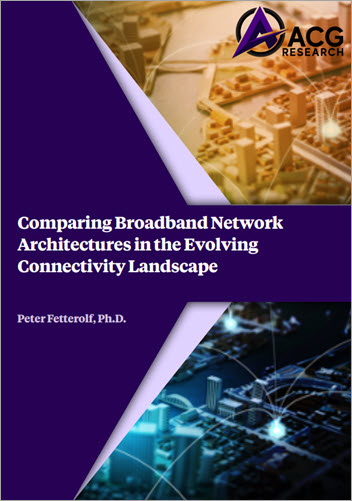This whitepaper provides a comprehensive analysis of the economic viability of various broadband network architectures in the evolving connectivity landscape. With an increasing demand for high bandwidth, network operators are exploring efficient ways to deploy fiber to homes and businesses across diverse geographical regions. The study examines three primary architectures: the traditional chassis-based PON (PMO1), the closed pizza box PON (PMO2), and the Ciena broadband solution powered by integrated router, uOLT and coherent pluggable (FMO). The evaluation focuses on the total cost of ownership (TCO), considering not only the initial capital expenditures (CapEx) but also the operational expenses (OpEx) over time.
Comparing broadband network architectures in the evolving connectivity landscape
Related
View more insightsVideos
Ciena vBNG - Powering the Future of Broadband
See how Ciena’s vBNG helps ISPs overcome these challenges through its virtualized, cloud-native, and disaggregated design.
WatchWebinars
On-demand webinar | Ciena’s ONU offerings: Powering the future of broadband
Don’t miss this opportunity to deepen your understanding of Ciena’s innovative ONU solutions. Register now and stay ahead in delivering world-class broadband connectivity.
WatchApplication Notes
Broadband for Tribal Nations and other Indigenous communities
High speed broadband is essential to cultural preservation, economic development, education, and healthcare access. Learn how our solution can help.
Download




